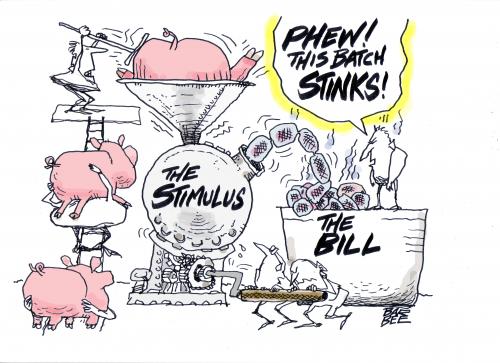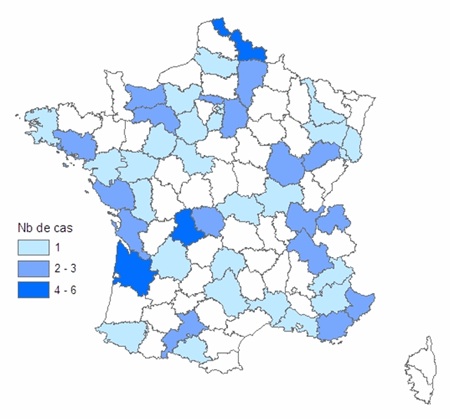In Feb. 1995, four-year-old Nikki Robinson died in Australia from E. coli O111 after eating contaminated mettwurst, an uncooked, semi-dry fermented sausage; 173 others were sickened, 23 of whom developed hemolytic uremic syndrome (HUS).
The company, Garibaldi, blamed a slaughterhouse for providing the contaminated product, while the State’s chief meat hygiene officer insisted that meat inspections and slaughtering techniques in Australian abattoirs were "top class and only getting better."
By Feb. 6, 1995, Garibaldi Smallgoods declared bankruptcy. Sales of smallgoods like mettwurst were down anywhere from 50 to 100 per cent according to the National Smallgoods Council.
The outbreak of E. coli O111 and reverberations fundamentally changed the public discussion of foodborne illness in Australia, much as similar outbreaks of VTEC or shiga-toxin producing E.  coli (STEC) in Japan, the U.K. and the U.S. subsequently altered public perception, regulatory efforts and industry pronouncements in those countries.
coli (STEC) in Japan, the U.K. and the U.S. subsequently altered public perception, regulatory efforts and industry pronouncements in those countries.
Now, 16 years later, Adelaide Now reports that all 23 HUS victims of the Garibaldi mettwurst saga have been compensated and will receive free health care for life.
After 16 years of illnesses, hospital treatments, coronial inquests and legal negotiations, counsel for the victims today told the District Court all cases had at last been settled.
All that remains is for the final "second wave" victims and insurer QBE – who inherited the disgraced company’s debts and obligations – to sign off on settlement papers.
Outside court, lawyer John Doherty – who has represented the victims throughout – said QBE had paid out "multi-millions of dollars" but declined to give specifics.
He said the State Government would continue to provide ongoing medical care for each child.
"One child had an organ transplant, only for it to fail and for him to need another one," he said.
"Another boy was just six months old when he was infected – his mother donated her kidney for a transplant a few months ago.
"This is not like a broken arm or leg – these are conditions that these children will have for the rest of their lives."
A coronial inquest would rule Nikki was killed by toxins in the meat that attacked her brain and caused a fatal stroke.
Her death was the result of Garibaldi’s failure to upgrade its processes and standards.
 The company had been a serial food-safety offender, responsible for poisoning 100 wedding guests with salmonella in 1990.
The company had been a serial food-safety offender, responsible for poisoning 100 wedding guests with salmonella in 1990.
During the epidemic, doctors and nurses came to refer to the emergency department of the Women’s and Children’s Hospital as "a battlefield’ as children were admitted on a daily basis with severe symptoms.
Scott Granton (right,in 2005, with Nikki Robinson in background) was left with 50 per cent kidney function, developed type 1 diabetes and had to learn to walk again.
Previously, the District Court has heard 20 of the claimants fell ill during the "first wave" of the epidemic, reporting to hospitals within days of consuming the goods.
Mr Doherty said the hospital and the media deserved thanks for their efforts throughout the saga.
"The Women’s and Children’s Hospital is truly a venerable institution. The media really has been instrumental in brokering this result because of the pressure it has put on QBE and the State Government.
 Dickinson said.
Dickinson said.
 importing sausages from Germany to continue a meal tradition started by the actress’s mother.
importing sausages from Germany to continue a meal tradition started by the actress’s mother. coli (STEC) in Japan, the U.K. and the U.S. subsequently altered public perception, regulatory efforts and industry pronouncements in those countries.
coli (STEC) in Japan, the U.K. and the U.S. subsequently altered public perception, regulatory efforts and industry pronouncements in those countries. The company had been a serial food-safety offender, responsible for poisoning 100 wedding guests with salmonella in 1990.
The company had been a serial food-safety offender, responsible for poisoning 100 wedding guests with salmonella in 1990. Center butchering event held Jan. 27 at the Mount Pleasant Ruritan Club.
Center butchering event held Jan. 27 at the Mount Pleasant Ruritan Club. von Bismarck: “If you like laws and sausages, you should never watch either one being made.”
von Bismarck: “If you like laws and sausages, you should never watch either one being made.” are specified in advance, carefully measured out and accurately identified on a label. An inspector from the United States Department of Agriculture visits the plant every day.
are specified in advance, carefully measured out and accurately identified on a label. An inspector from the United States Department of Agriculture visits the plant every day. listeria up to 600 times the legal limit.
listeria up to 600 times the legal limit. Health and Food Safety announced.
Health and Food Safety announced.
 A traceback showed that these sausages came from the same batch produced in a single firm in France, distributed nationally during the first two weeks of March 2010. The best by date for this batch extends from June 1 to 15, 2010.
A traceback showed that these sausages came from the same batch produced in a single firm in France, distributed nationally during the first two weeks of March 2010. The best by date for this batch extends from June 1 to 15, 2010.